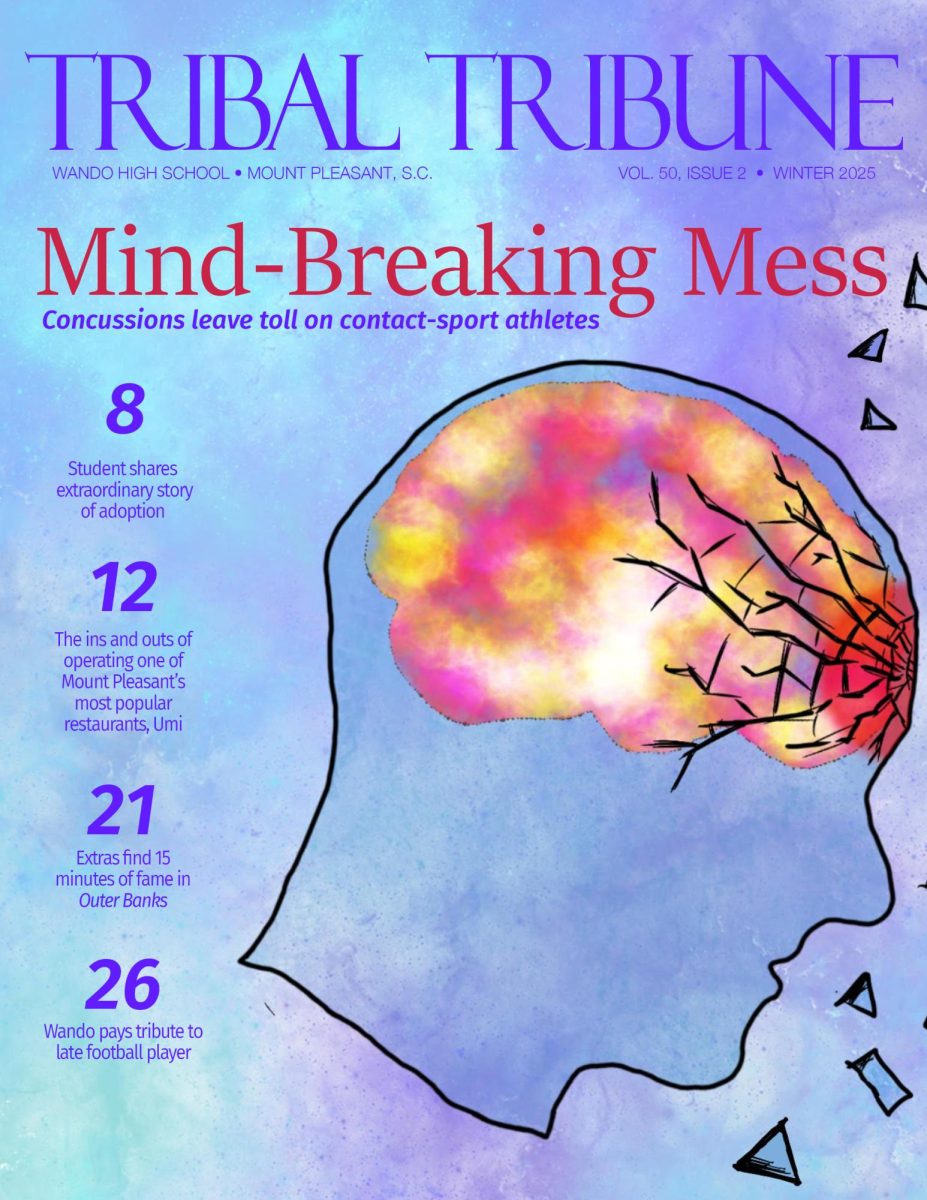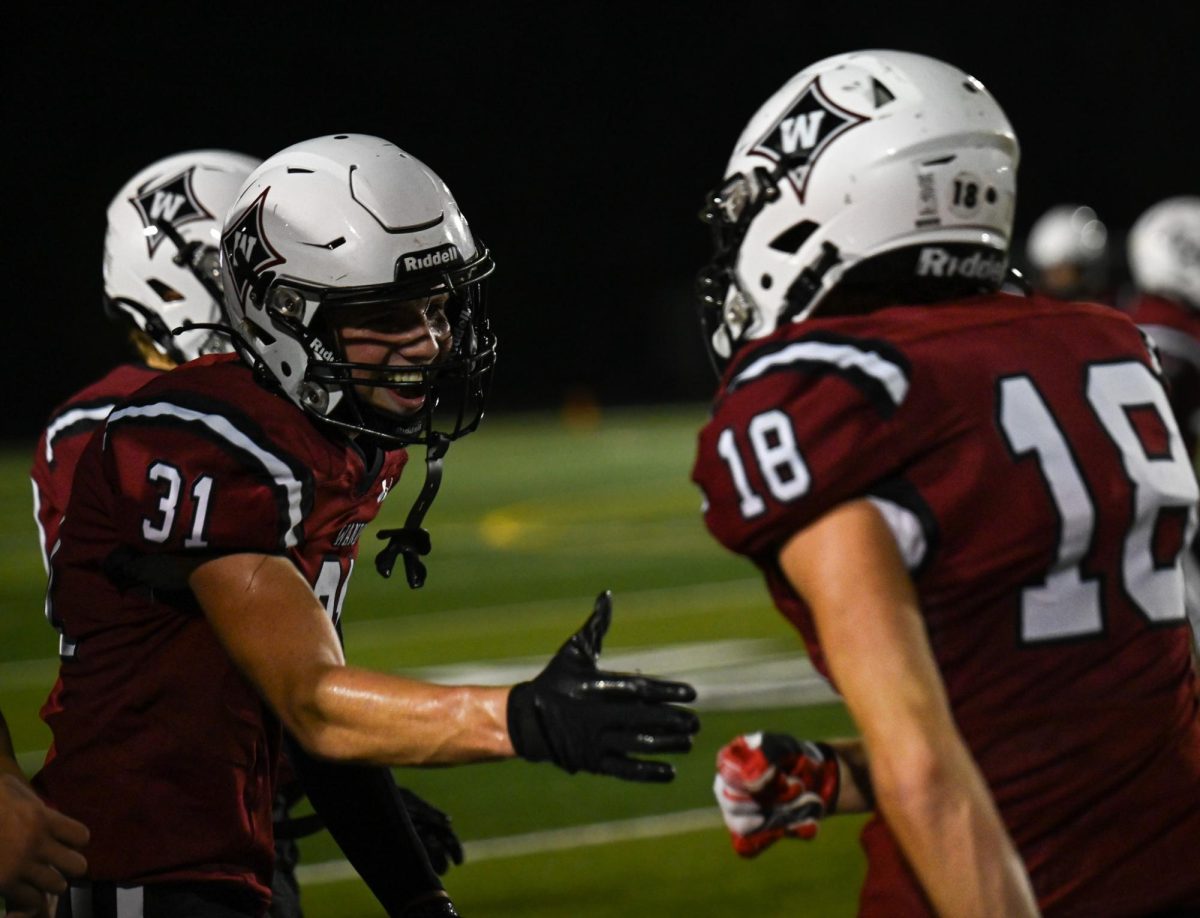Students find a new self-reflection
AP art scholars reflect experiences, emotions in their work
Senior Julia Knolbech sketches her AP studio final project. “My project is about expressing my emotions and what I’m dealing with right now. I don’t use a lot of color, it’s a lot of thumbnail,” Knolbech said.
From sketchbook to canvas. Her ideas come to life through brush strokes and sweeps of color. Senior Fath Liu puts her abilities to the test while also improving her skills attending the AP Studio Art class.
Unlike other AP Exams, AP Studio Art students work on a 12 piece portfolio following a theme of their choice. Whether its social issues, culture, or internal struggles, these students express their emotions in a creative direction.
This project is a highly anticipated project by many artists at Wando.
“[I’ve liked art since I was] a little kid. My parents would get me sketchbooks and it was one of my pastimes so I took a lot of art classes in elementary school,” Liu said.
Through the years Liu has been able to watch herself grow through her art while taking AP Studio Art.
“[The class] forces you to think a lot more about why you’re drawing the stuff that you’re drawing and the meaning behind it. You also have to think about your point of view and how you’re positioning your work,” Liu said. “I think AP studio has helped me make my work a lot more developed than it used to be.”
Through the portfolio making process, the brainstorming aspect and coming up with a theme and a muse can be the most important part.
“My portfolio is based on the impact that my culture has had on me since I’m a second generation immigrant. It was kind of helping me come to terms with the impact it’s had on me and also how through the portfolio I’ve developed. In the beginning, it was more of a negative relationship and then now I focus more on how it has positively impacted me,” Liu said.
The journey as a whole is a very eye-opening experience for Liu. She was able to learn things about herself and even boost her confidence along the way.
“At the beginning, I didn’t think that I would be able to complete all the pieces. It was a really daunting goal. So now that I’m almost at the end, I think I learned that I can do more than I thought I could,” Liu said. “Also looking back at my pieces, even from the beginning of the year, I can really see how I’ve developed. And I think it’s really encouraging to see that, because I know that I still have room to grow so it really pushes me to keep working on my art.”
As a teacher, the whole process looks different. AP Studio Art teacher Ashley Wyrick has been guiding her students through this process for 16 years and is still just as excited when the time comes to start the project.
“Students are tasked with creating what’s called a sustained investigation, which means that they’re creating a body of works that are similar in some manner, whether it be theme media, which is the material they work with, or technique,” Wyrick said.
“They begin the process in the fall, and develop their proposals and ideas of what they’d like to work on throughout the semester, and begin actually working on this body of work in the fall and until the spring.”
Wyrick gets the opportunity to help her students come up with themes and supports them while they create their pieces.
“I really am just more or less helping to facilitate them with technical skill, or with concept and ideas, helping to give feedback, posing questions at times to see like, ‘How could you improve?’ or ‘Do you think you could consider this’ so starting off being kind of a facilitator or a sounding board, as they move to getting closer to the portfolio deadline I certainly become more of a cheerleader, trying to motivate them to finish out strong,” Wyrick said. “But at this point, they’re pretty self driven and they put a lot of pressure on themselves, so I’m just here to kind of back them up.”
Despite not being the one to actually create the art, Wyrick still faced challenges as she guided her students through their work.
“Every day is a challenge for many different reasons. It might be for motivating students to stay on task or to stay driven. It might be coaching somebody through a difficult period in the portfolio where they’re feeling stagnant or they’re stuck. They have artists’ blocks, I like helping to coach them through that. Other times, it’s…keeping them pacing appropriately, because if they don’t meet a deadline… then it snowballs into not meeting many deadlines and that can become very stressful, especially at the end.”
With every challenge comes a learning opportunity and that’s exactly how it went for Wyrick.
“I’ve learned that every individual is different and that I can’t just lump them all into one basket because they’re all different. Definitely having taught for 16 years I have some strategies up my sleeve to help but the biggest thing is just building relationships with the students and knowing that when there’s a challenging day with that student that I can sit and really talk with them in a personal and professional manner,” Wyrick said.
The final destination of the portfolio process tends to leave Wyrick feeling all kinds of emotions. Seeing all of her students’ ideas being brought to life brings her so much joy.
“My goodness, it’s like Christmas Day. When they’ve submitted and to be able to view the works as a whole, it’s very exciting. I’m very proud of the students and what they’ve accomplished. They’ve given their heart and soul to the process. So for me, as a parent myself, it’s like a proud mama moment,” Wyrick said.





































